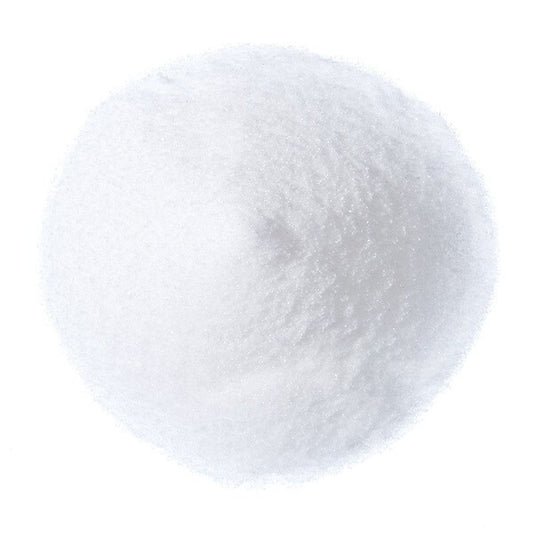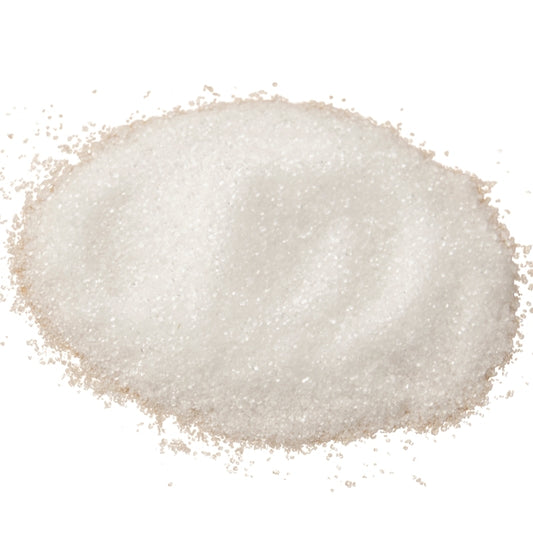
Working With Mandelic Acid
Juliette van der MeerWhat Is Mandelic Acid?
Mandelic acid is one of our new additions and is part of the AHA family of acids. It is interesting because it has a large molecular structure which doesn't allow it to penetrate to deeper levels of the skin. This makes it very gentle, non-allergenic and non-reactive, and highly suited to very sensitive skin types.
What Does Mandelic Acid Do?
Mandelic acid can correct uneven skin tone and texture over time with consistent use. It also helps with acne and breakouts in sensitive skins, folliculitus, and creates lovely exfoliated, smooth and glowy skin.
What is The Solubility Of Mandelic Acid?
Mandelic acid is water soluble and easy to use. Just dissolve in water (or water based liquids).
What is The pH Of Mandelic Acid?
Mandelic acid has a natural pH level of 2.3 and like other acids, it works best in the acidic range. Keep your formulation pH levels at 3-4 for skin. You can go higher but then the acid will lose its effectiveness.
What is The Usage Rate Of Mandelic Acid?
- Rinse off (eg. peels): up to 10%. We don't recommend you go higher than 10% without a dermatologist's supervision.
- Leave on: 1%, up to 3%.
What Combines Well With Mandelic Acid?
- Hyaluronic acid - yes!
- Other acids - yes, in moderation.
- Niacinamide - niacinamide prefers higher pH levels, so you would need to raise the final pH of the formula which can render the acid less effective.
- Physical exfoliants - yes.
- Oils - yes, you just need an emulsifier.
Types of Products That Use Mandelic Acid
Leave on and rinse off products in mask, serum, gel, emulsion, cream, wash or exfoliant format.
Please always use sunscreen when using acids.
Formulations With Mandelic Acid
Mandelic Acid Gel Serum Two Ways
A gel serum is an ideal way to use mandelic acid, or any hydrophilic acid. Try it two different ways and see which you prefer. If you want the serum to be stronger, or use other acids, you can make room for that by reducing the water amount.
I've kept it at 2% acid which is fine for everyday use.
#1
- 0.75% HEC
- 3% propanediol
- 93.25% water
- 2% mandelic acid
- 1% Geogard 221 / Saliguard BDHA
- Adjust pH levels to around 3.5 with baking soda
#2
- 1% hyaluronic acid powder
- 96% water
- 2% mandelic acid
- 1% Geogard 221 / Saliguard BDHA
- Adjust pH levels to around 3.5 with baking soda
If you want to go higher with the mandelic acid you can, just make room for it in the formula by reducing the water amount.
Serum With Mandelic Acid (Advanced)
Of course you can keep making water based serums with acids, but an emulsion serum allows so much more room for variety! Think of all the wonderful plant oils and other oil-based ingredients you can incorporate in an emulsion.
The Acid Challenge
When formulating an emulsion serum with acids, we need to keep in mind the pH limitations. As mentioned, acids work best at lower pH levels around 3 - 4 (or below), however many preservatives and emulsifiers prefer to be at slightly higher levels around 5. So we need an emulsifier and a preservative that can handle a lower pH.
- Luckily Geogard 221 or Saliguard BDHA is a perfect fit as they can handle lower pH levels.
- Eco E wax and OliveM 1000 can handle lower pH levels too, you just need to include some stabilisers. Emulsifier HP 30 can handle from 4-9 so is unfortunately not suitable for this formula unless you raise the pH, which would render the acid less effective.
This serum contains mandelic and tartaric acids, ferulic acid as an additional antioxidant, panthenol, lecithin and bisabolol - a really lovely combination of anti-agers and soothing ingredients.
This is an advanced formula and I don't recommend you make it if you are a beginner. You need to be comfortable using lots of ingredients, multiple phases and tricky pH adjustments.
















